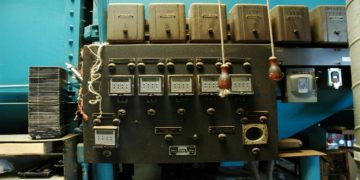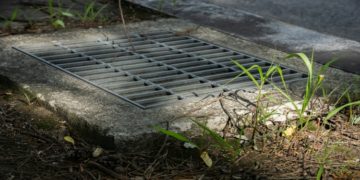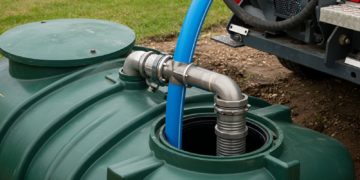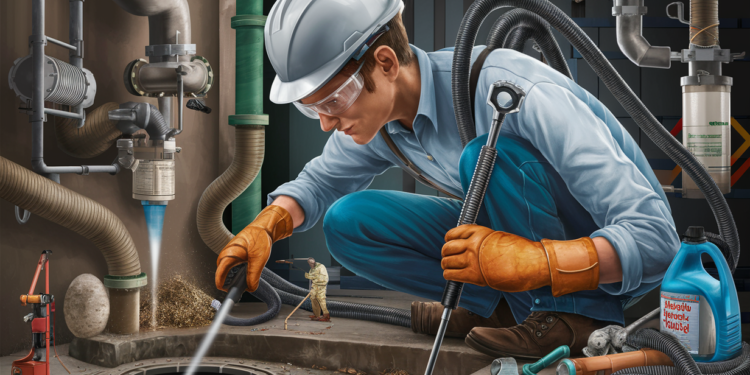A septic tank serves as a separator, separating solids and liquids that have been disposed of in toilets, kitchens, and bathrooms. The solids are deposited at the bottom (sludge), and oils and grease are placed on the surface (scum), where the liquid effluent enters a soakaway or drainage field, where it is safely dispersed. In the absence of an effective septic tank, untreated wastewater contaminates soil, groundwater, and the adjacent rivers and lakes.
Septic tanks prevent the spread of pathogenic bacteria and pollutants, thereby protecting the health of people and the surrounding environment. Direct discharge of wastewater into rivers, streams, or lakes is also not possible as it is considered offensive and carries legal consequences, such as a fine of up to £100,000 in the UK. Hence, it is necessary to treat wastewater properly to avoid fines or forceful action. It is advisable to consult septic tank replacement specialists for proper septic tank installation.
How Septic Tank Installation Is Done
Septic tank installation is vital for the systems to function safely and efficiently. Here is an overview of the process:
1. Site Survey and Soil Testing
Before installation, a detailed inspection of the site is conducted, and a percolation test is conducted to examine the ground’s absorbing capacity. The basic survey identifies the best location for the tank and drainage field. Soil type and its porosity are important factors in tank installation. Septic tanks and soakaways must be positioned a safe distance away from houses, sheds, wells, streams, rivers, or ponds. Typically, according to UK regulations, tanks must be at least 7–10 metres from buildings and 10 metres from natural water bodies. This distance prevents structural damage and protects natural water sources from being polluted.
2. System Design and Planning
Planning comprises of the following points tank size based on household occupancy. Type of soakaway or drainage field required and regulations compliance plays major role in planning the entire system.
3. Installation and Testing
After performing the excavation, all inlet and outlet pipes are connected for septic tank installation. The drainage field or soakaway trench is dug and fitted for even distribution of effluent into the soil. The system is tested to identify leaks, ensure proper flow, and verify compliance with regulations. Once approved, the tank is covered, and the site is restored. A newly installed tank can last decades with proper maintenance.
Regular Inspections
A septic tank requires only periodic emptying, and it can last for decades, making it a cost-effective and low-maintenance solution. This makes it a practical long-term ideal solution for properties in areas without public sewage systems. It is easy to maintain septic tanks with regular inspection by professional services. During an inspection, sludge and scum levels are checked, and baffles and filters are inspected to ensure the proper flow of wastewater into the soakaway or drainage field. The basic inspection involves a thorough examination for cracks, leaks, and the overall condition of the system to ensure there are no hidden issues.
Septic Tank Pumping
Over time, the solid waste builds up inside the tank. To remove this build-up consisting of sludge, scum, and other solids, septic tank pumping is performed. If not maintained properly, there is a high chance that this built-up overflows into the soakaway, leading to serious problems such as blocked pipes, foul odours, and failure of the entire system. Tanks generally need to be pumped out every 1 to 3 years. A vacuum tanker or pump truck is used for tank pumping. Both the sludge at the bottom and the scum layer at the top are removed to ensure proper functioning of the tank again. However, like any essential infrastructure, septic tanks eventually reach the point where they need replacement, repair, or professional installation.
Septic Tank Repairs
After a thorough inspection, the required repairs are performed, including sealing cracks in the tank, replacing damaged inlet or outlet pipes, repairing baffles that prevent solids from evacuating the tank, and clearing blockages that disrupt wastewater flow. In some cases, where effluent does not disperse properly, the soakaway or drainage field may need refurbishment. Repairs performed by septic tank specialists such as PDS, involve specialized checks, including inspecting manhole covers, chambers, and filtration systems, which ensure the smooth operation of the septic tank.
Why Septic Tank Replacement Is Needed
Septic tanks are built to last for 20-20 years. The replacement of a septic tank depends on the material used, its maintenance, and the local ground conditions, hence it mandatory to consult septic tank replacement specialists. There are several reasons why replacement may become necessary:
- Structural Damage
Over time, aged concrete or steel tanks can crack, corrode, or collapse. The tanks that are in conditions beyond repair require complete replacement, preventing leakage of untreated sewage into the ground, environmental, and health hazards.
- Non-Compliance with Regulations
According to new environmental norms, such as the General Binding Rules in the UK, no wastewater can be discharged directly into surface water (like streams or ditches). Failing to adhere to the standards, a heavy fine is levied. It is essential to upgrade or replace the tanks in accordance with new regulations.
- Capacity Issues
The capacity of the tanks must be sufficient; in accordance with the number of occupants, the number of bathrooms, and the volume of the wastewater.
- Frequent Blockages or Backups
Septic tanks requiring constant pumping, persistent foul smells, or slow drainage are clear signals that the tank needs immediate repair. In such cases, replacements are usually a better option as they are cost-effective than repeated repairs.
- Environmental Concerns
Old tanks without proper filtration release harmful waste into groundwater. Replacing them with modern systems ensures safer treatment and better protection of soil and water resources.
The Role of Septic Tank Replacement Specialists
While some homeowners may consider septic tanks straightforward, replacement and installation are complex projects requiring specialist knowledge. Professional septic tank contractors provide:
- Expertise in Regulations: A professional service ensures tank installations are in compliance with the latest government regulations.
- Correct Sizing and Design: It duty of specialist to ensure that the size of septic tank should be in accordance to the number of people living in that building. Undersized tanks tend to overflow quickly.
- Safe Excavation and Handling: Safety is one of the important factors; an expert service ensures preventing of accidents and property damage during the process of excavation.
- High-Quality Materials and Equipment: Quality of materials and proper backfill methods decide the durability of tank.
- Long-Term Reliability: Installing systems that last for decades with minimal issues.
Benefits of Choosing a PDS for Septic Tank Installation
- Knowing your system is legally compliant and environmentally safe gives you confidence and Peace of Mind.
- A properly installed system reduces the risk of costly future repairs making it cost-effective choice.
- Preventing groundwater contamination and foul odours ensure health and safety.
- A modern, functioning septic system adds value to the property making it attractive to buyers.
Signs You May Need a Septic Tank Replacement
If you notice any of the following issues, it may be time to consult a septic tank specialist:
- Foul smells in the garden or near drains
- Standing water or soggy patches above the tank or drainage field
- Toilets and sinks draining slowly
- Frequent need for tank emptying
- Tank discharges directly into surface water (no longer legal in the UK)
Conclusion
One of the most essential systems in off-grid and rural properties is a septic tank. Knowing the reasons why replacement is required, the process of installation and the way the system works will help you make the correct decision whenever upgrading or repairing your system. You may require a brand new septic tank installation or an upgrade to comply with the current regulations but by hiring professionals, you are assured of a long, safe and affordable answer.











































































